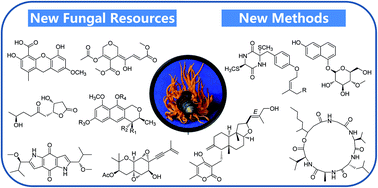Secondary metabolites from hypocrealean entomopathogenic fungi: novel bioactive compounds
Abstract
Covering: 2014 up to the third quarter of 2019
Entomopathogens constitute a unique, specialized trophic subgroup of fungi, most of whose members belong to the order Hypocreales (class Sordariomycetes, phylum Ascomycota). These Hypocrealean Entomopathogenic Fungi (HEF) produce a large variety of secondary metabolites (SMs) and their genomes rank highly for the number of predicted, unique SM biosynthetic gene clusters. SMs from HEF have diverse roles in insect pathogenicity as virulence factors by modulating various interactions between the producer fungus and its insect host. In addition, these SMs also defend the carcass of the prey against opportunistic microbial invaders, mediate intra- and interspecies communication, and mitigate abiotic and biotic stresses. Thus, these SMs contribute to the role of HEF as commercial biopesticides in the context of integrated pest management systems, and provide lead compounds for the development of chemical pesticides for crop protection. These bioactive SMs also underpin the widespread use of certain HEF as nutraceuticals and traditional remedies, and allowed the modern pharmaceutical industry to repurpose some of these molecules as life-saving human medications. Herein, we survey the structures and biological activities of SMs described from HEF, and summarize new information on the roles of these metabolites in fungal virulence.



 Please wait while we load your content...
Please wait while we load your content...